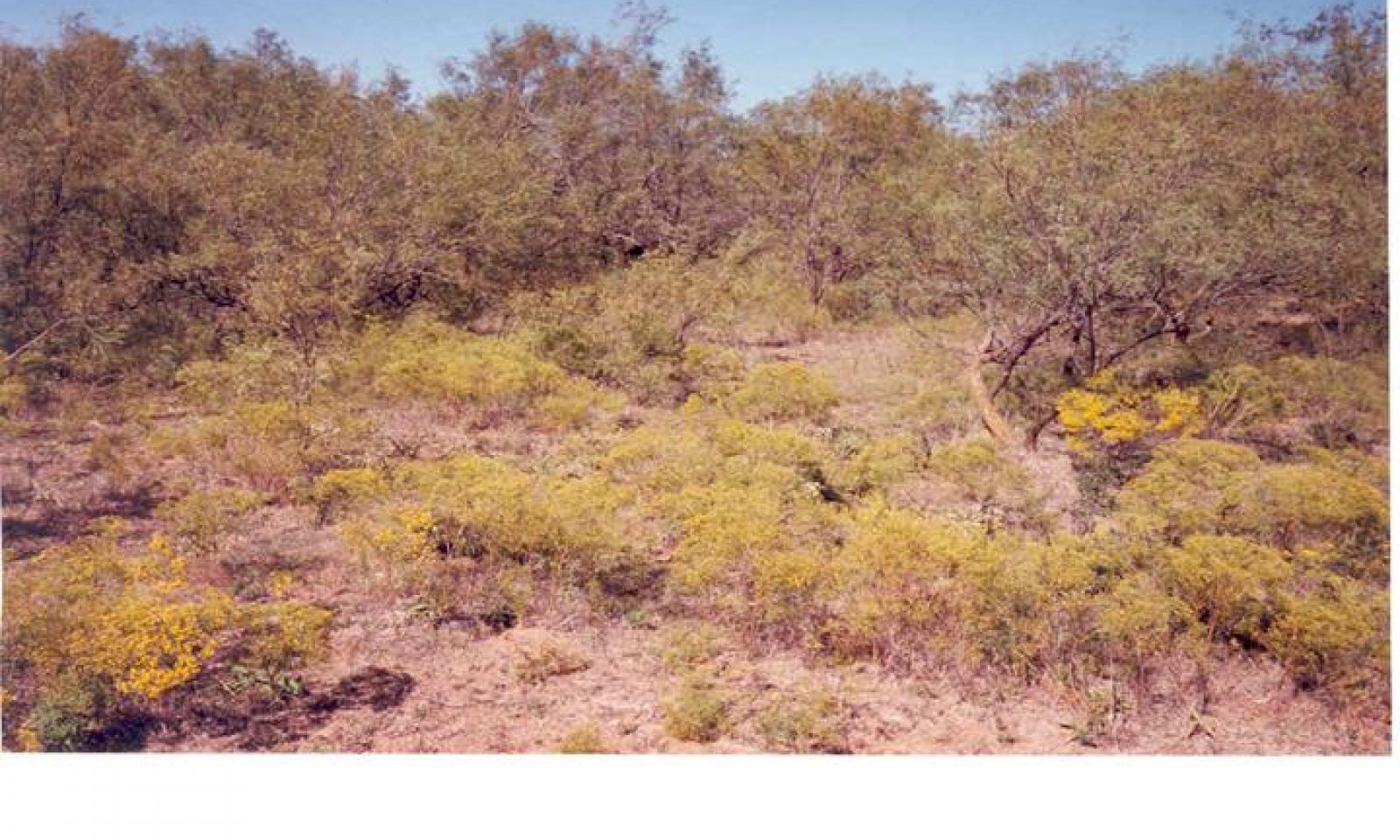
Alkali Bottomland
Scenario model
Current ecosystem state
Select a state
Management practices/drivers
Select a transition or restoration pathway
- Transition T1A More details
- Transition T1B More details
- Restoration pathway R2A More details
-
No transition or restoration pathway between the selected states has been described
Target ecosystem state
Select a state
Submodel
State 2
Invasion Woody Dominated (Mesquite or Tamarisk)



Submodel
Description
Alkali Bottomland sites are usually not intentially cultivated. But, even though an Alkali Bottomland site was cultivated for a substantial period of time(State 5, S&T), it is not always impossible for the the site to return to something resembling the reference state. Cultivation is definitely not a one-way street for an ecological site. The return of a cultivated field to the HPC depends on the length of time in cultivation, erosion, loss of organic matter, soil type, and precipitation zone (and probably others). Remnant terraces usually reveal the fact that the fields were cultivated at some time in the past. Sometimes, it is very difficult to determine if fields were cultivated. Some of these sites were probably reseeded, others were not. If the soil resource has not been heavily degraded and given enough time, the site could get back to the HPC or something very close to it. The soil resource is the primary factor. Alkali bottomland sites are usually small inclusions in larger croped areas. So, these areas themselves, are usually not intentially cultivated. Because of the topography of this site (0% to very little slope) there are no Alkali Bottomland eroded soils mapped in the state of Oklahoma at the time of this revision writing (4/2006).
Mechanism
Lack of fire and brush encroachment can lead to a woody dominated site.
Constraints to recovery
Some brush species are extremely difficult to eradicate but may be managed at an acceptable level.
Context dependence
The more severe the woody invasion and longer time since fire may increase the inputs needed to attempt control.
Mechanism
This transition occurs as the result of cultivation for crop production. The soil structure and hydrology are altered.
Constraints to recovery
With the soil structure, chemistry, and hydrology altered through cultivation, it will be very difficult for the site to be returned to reference conditions.
Mechanism
Through and program of prescribed fire, managed grazing, and potential chemical brush management, the woody state may be restored to the reference state.
Context dependence
The overall level of infestation and time since fire play a major role in determining the level of inputs required for the restoration.
Relevant conservation practices
| Practice | External resources |
|---|---|
|
Brush Management |
|
|
Prescribed Burning |
|
|
Prescribed Grazing |
Model keys
Briefcase
Add ecological sites and Major Land Resource Areas to your briefcase by clicking on the briefcase (![]() ) icon wherever it occurs. Drag and drop items to reorder. Cookies are used to store briefcase items between browsing sessions. Because of this, the number of items that can be added to your briefcase is limited, and briefcase items added on one device and browser cannot be accessed from another device or browser. Users who do not wish to place cookies on their devices should not use the briefcase tool. Briefcase cookies serve no other purpose than described here and are deleted whenever browsing history is cleared.
) icon wherever it occurs. Drag and drop items to reorder. Cookies are used to store briefcase items between browsing sessions. Because of this, the number of items that can be added to your briefcase is limited, and briefcase items added on one device and browser cannot be accessed from another device or browser. Users who do not wish to place cookies on their devices should not use the briefcase tool. Briefcase cookies serve no other purpose than described here and are deleted whenever browsing history is cleared.
Ecological sites
Major Land Resource Areas
The Ecosystem Dynamics Interpretive Tool is an information system framework developed by the USDA-ARS Jornada Experimental Range, USDA Natural Resources Conservation Service, and New Mexico State University.



